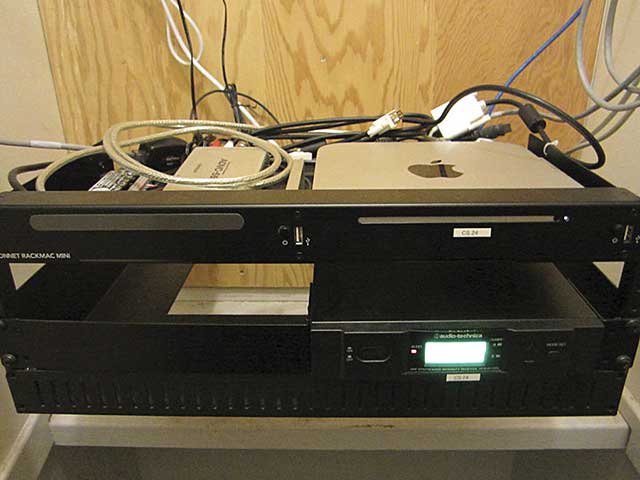Three Paths to Lecture Capture in Higher Education
The Panopto service formally launched to the Duke community in July 2010. As of November 2012, there were 75 classrooms equipped for recording, and 13,000 recordings have been generated. Stabley says that the IT department have been impressed with Panopto's support offerings, adding that the company has "been a strong partner for Duke."
UCLA
When considering lecture capture, it can pay to start small and see how things develop. The simplest solution might be the one that works best. That's what happened at UCLA, where Daniel Bustos, instructional design and technology coordinator at the Office of Instructional Development, says UCLA started with a small, five-course pilot in 2005. The experience resulted in one important conclusion: Most of the instructors were not using PowerPoint. "They were using the chalk board, [as many as] three or four boards," he says. "The best way to capture that is a straight-on camera shot." In part, this was due to capture becoming much more popular with science classes, where the blackboard is still king.
After the pilot the Office of Instruction Development decided to equip three large lecture halls with a single camera connected to streaming appliances. By the end of the first year, the office was recording 20 courses a quarter.
UCLA's BruinCast lecture capture service has grown steadily since then, driven primarily by demand from instructors. While Bustos' office has evaluated several major lecture capture platforms, it chose to stay with single-camera recording, using IP-controlled PTZ cameras. As of the end of 2012, there were four large lecture halls equipped with Mac Minis running Windows 7, encoding video using Microsoft Expression Encoder or Blackmagic Media Express. Another 61 classrooms are using Barix Instreamer 100 appliances to capture audio. All the devices are controlled remotely, with the Windows machines administered by remote desktop.
Bustos counts approximately 3,700 hours of video each academic year, averaging 40 video courses per quarter, as well as approximately 4,100 hours of audio each year, averaging 56 audio courses per quarter. For 2013, he says, "[W]e should have an additional four video encoding rooms by March."

UCLA has set up four lecture halls with Mac Minis running Windows 7, encoding using Microsoft Expression Encoder or Blackmagic Media Express, while another 61 classrooms use Barix Instreamer 100 appliances to capture audio.
The recorded video is managed by having a strict naming convention so that the course and date can be easily identified. However, Bustos says, "[D]eep metadata is something we're looking at right now." Overall, he calls their system "a very MacGyver'd solution, but it works ... intersecting with how we are actually using it today in the classroom."
California State University-San Marcos
Chuck Allen is the manager of eMedia and Learning Spaces at California State University-San Marcos. When it came to introducing lecture capture at that institution, his intuition took the "build it, and they will come" approach. In the years since that first 2006 deployment, it looks like Allen's prediction was correct, with approximately 11,000 class sessions having been recorded.
As the A/V designer for new buildings at the growing San Marcos campus, Allen also started small. In 2005, he chose to integrate lecture capture in a new building, the Kellogg Library. By comparison, the lecture capture technology "was a small part of a much larger build," making it easier to integrate the cost. He chose to go with Sonic Foundry, Inc.'s Mediasite because after attending Streaming Media West shows and meeting with vendors, "[I]t looked like the right candidate at the time." He thinks, "[W]e picked well [because] the product kept growing and extending, [responding] to user feedback."
The Kellogg Library is equipped with three recorders in three rooms, which meant, according to Allen, "people had to come to us." This way Allen could maintain a few spaces "with very good production values, with good lighting, acoustic treatment and wireless microphones." He says, "[I]nstructors can just walk in, walk out, and then they get a URL." Making sure that there is "no strain on the faculty to come use it" has helped the service grow.
Allen's group has leveraged other features offered by the Mediasite server. They are using it to deliver media for library e-reserves, using Mediasite Catalog pages to provide students with access. The San Marcos campus is also taking advantage of the CSU system's contract with AutomaticSync to provide captions for captured videos. Allen says it "is really just a one-button push in the media manager" to add captions.
In 2012, the group began offering faculty the ability to record desktop and iOS video and ingest it into the Mediasite system using Camtasia Relay. Allen says, "Faculty love it and have recorded over 1500 session since the first of the year."
At this point Allen says, he is not looking at other platforms. Instead, he is thinking about how to migrate his media server infrastructure "into someone's cloud for encoding, storage, backup -- everything." This is because he "would rather we help people make the best use of these wonderful tools." Allen hopes "that the current rage for the ‘flipped classroom' helps focus people on making media that works."
This article appears in the 2013 Streaming Media Industry Sourcebook.
Related Articles
While some colleges and universities have redundant systems in place to safeguard video files, others are haphazard about video organization.
31 Dec 2014
MOOCs are bringing education to a wider group of learners, but creating them leads to growing pains within the university.
10 Oct 2014
The proliferation of mobile devices and the surge in popularity of the flipped classroom mean that video is at the head of the class in today's schools.
31 Mar 2014
By combining lecture capture with mobile device interactivity, educators gain new ways to engage students in or out of the classroom.
06 Mar 2013